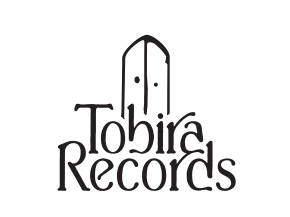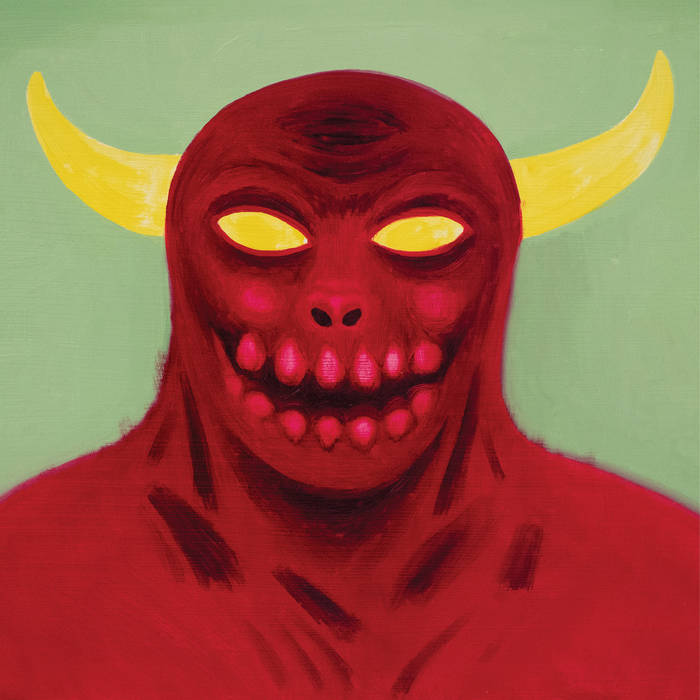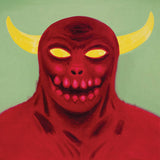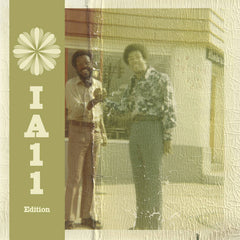Joseph Shabason // Welcome To Hell LP
- Availability:
カナダ・トロントのサックス奏者Joseph Shabasonが、2023年10月にアメリカの老舗レーベルWestern Vinylからリリースしたレコードです。
1996年のスケートボード作品『Welcome To Hell』にインスパイアされたアンビエント・スピリチュアルジャズ10曲を収録。
※デジタル音源をご希望の場合はお気軽にご連絡をお願いいたします
以下、レーベルによる解説です。
"地獄ってどんなところ?警察官、ビジネスマン、ファーストフード店の従業員の映像の上に星条旗が脈打つようにオーバーレイされた、トイマシンスケートボードの1996年の代表的なビデオ『Welcome To Hell 』のイントロは、地獄をアメリカの例外主義の蜃気楼として描いているように見えるだろう。外見上は火と硫黄のにおいはしないが、鼻を風に向けてみれば硫黄のにおいがするような、何世紀にもわたって続く非現実。
このシーンの後に登場するのは、そのような明らかな天罰の描写から生まれた、あるいはそれにもかかわらず、文化の試金石となるものだ。最高レベルで披露されるスケートボードは、この後何十年にもわたって観客に影響を与え、愛着を抱かせるような方法で構成され、展示される。『Welcome To Hell 』では、ユニークかつ先進的なスケートボーダーたちがパッチワークのように登場するが、そのほとんどが彼らの世界でアイコン的存在となり、現代のスケートボードビデオのあり方を再定義する一助となった。
若きJoseph Shabasonはその衝撃を感じていた。この高名なミュージシャンは、青春時代に『Welcome To Hell 』のVHSを何百回も巻き戻した。爽快で、即興的で、全身を使ったスケートボードの体験は、Shabasonがジャズになぞらえたもので、ウィールと木管楽器の間には共通の言語が存在する。スケートボーダーとミュージシャンがその言語を使い分けることで、"スタイル "という気まぐれな概念に定義が加わる。スケーターとミュージシャンのアンサンブルは騒々しく、クリエイティブな集団だ。この関係性とトイマシンの名作を振り返ることで、Shabasonは最終的に「地獄のサウンドとはどんなものか」と考えるようになる。
その答えは、彼のこれまでのレコードと同様、パーソナルな世界に生きるコンセプトアルバムだった。スケートボードそのものがそうであるように、"Welcome To Hell "の再ソロ化という新しい試みにShabasonは挑戦することになる。このビデオのオリジナルサウンドトラックは、ミスフィッツ、ブラックサバス、ソニックユースといったバンドのアクティブでアグレッシブな楽曲をミックスしたもので、多くの人にとって音楽の目覚めとなった。Shabasonは、この10曲のアルバムの中で、角ばった曲やアンビエントな曲と戯れ、画面上のアクションとともに前進する大編成のメロディーを探求し、このカルチャーを定義するスケートビデオと登場するスケートボーダーに対する私たちの理解を再構築するような、微妙かつ実質的な方法でムードを変化させている。
シャバソンの本作は、27年前の名作に新たな畏敬の念を植え付ける挑発的な再映像化であり、オリジナルが最初に投げかけた「地獄が何度も戻りたくなる場所だとしたら?」という問いを示唆する。"
レーベルその他作品はこちら /// Click here to see more Western Vinyl releases available at Tobira.
----------------------------
Black LP. Ask us for digital files.
Western Vinyl:
"What does hell look like? The introduction of Toy Machine skateboard's seminal 1996 video “Welcome To Hell,” with its pulsing overlay of the Stars and Stripes on top footage of police officers, businessmen, and fast food service workers, would appear to paint hell as the mirage of American exceptionalism. A thick, centuries-spanning unreality that may not outwardly trade in fire and brimstone, but if you turn your nose to the wind, you’ll smell sulphur.
What comes after that scene, born of — or despite — those apparent depictions of damnation, would become a cultural touchstone: skateboarding performed at the highest level, composed and displayed in a fashion that would influence and endear audiences for decades to come. “Welcome To Hell” features a unique and progressive patchwork of skateboarders, most of which would become icons in their world, and helped redefine what the modern skateboarding video could be.
A young Joseph Shabason felt that impact. The acclaimed musician hit rewind on his VHS copy of “Welcome To Hell” hundreds of times in his youth, each watch as thrilling as the last. That invigorating, improvisational, full-body experience of skateboarding is one that Shabason likens to jazz, where a shared language exists between the wheels and woodwinds. The way the skateboarder and musician command that language is what distinguishes them, adding definition to the mercurial concept of “style.” This connection becomes most apparent in collaboration; ensembles of skaters and musicians are a noisy, creative bunch. Reflecting on this relationship and the Toy Machine classic would ultimately lead Shabason to wonder: what does hell sound like?
The answer was a concept album that, like his previous records, lives in the personal. One that, much like skateboarding itself, would push him to try something new: rescoring “Welcome To Hell.” The video’s original soundtrack served as a musical awakening for many — an active, aggressive mix of songs from bands like The Misfits, Black Sabbath, and Sonic Youth. Here, you’ll find that recontextualized, softened, yet no less energizing. Over the album’s ten songs, Shabason plays with the angular and ambient, exploring large group melodies that move forward with the on-screen action, shifting the mood in subtle and substantial ways that reframe our understanding of this culture-defining skate video and the skateboarders in it.
In Shabason’s “Hell,” quintessential “East Coast powerhouse,” Mike Maldonado is backed by a sharp, driving modal composition that calls back to 1970s Miles Davis, the melodic sensibilities of Azimuth, and stands as a fascinating complement to Maldonado’s hard-charging on-board approach. The debut of Elissa Steamer, a pioneer decades ahead of her time, is given fresh spirit with an off-kilter funk. Brian Anderson, whose virtuosic section was originally guided by a dour Pink Floyd track, now flies across the screen in jazzy fits and starts, punctuated by the joyous wail of Shabason’s saxophone. Nowhere does the fluid and improvisational intersection of skateboarding and jazz meet and swell than with Donny Barley. His easy, instinctual cool flecked with tinkling synths and bass lines that echo the natural power of Barley’s abilities.
Shabason then creates what could be rightly considered an audio portrait of Ed Templeton. The celebrated visual artist, photographer, and founder of Toy Machine cuts a distinct profile, which Shabason distills with a throbbing, slanted rhythm and an eerie layering of feedback and pressuring keys. The “curtains” section in “Welcome To Hell” belongs to Jamie Thomas, whose career-defining performance here would set the stage for a decades-spanning career and a level of influence in skateboarding that is still felt today. Shabason meets Thomas’ epic with a commanding, angular rhythm that builds and flows with the momentum of his skateboarding. Airy group melodies mingle with a wonked-out vibraphone and tight percussion that lets loose in florid bursts before devolving into a finishing sequence of muscular improvisation — a fittingly bold interpretation of the work of one of skateboarding’s most daring practitioners.
Finally, as if ending with his thesis statement, the last song of Shabason’s “Welcome To Hell” is a calming vocal harmony that lies atop the video’s infamous “bail section.” A horrific collection of skateboarders falling and twisting themselves into agonizing, unnatural shapes — a Hieronymous Bosch captured on VHS. It’s the culmination of the unexpected made whole. Shabason’s album a provocative reimagining that instills a new sense of awe in the 27-year-old classic, prompting the question first posed by the original: what if hell was a place you wanted to return to again and again? "
Artist : Joseph Shabason
Label : Western Vinyl
Cat No : WV257lp
カナダ・トロントのサックス奏者Joseph Shabasonが、2023年10月にアメリカの老舗レーベルWestern Vinylからリリースしたレコードです。
1996年のスケートボード作品『Welcome To Hell』にインスパイアされたアンビエント・スピリチュアルジャズ10曲を収録。
※デジタル音源をご希望の場合はお気軽にご連絡をお願いいたします
以下、レーベルによる解説です。
"地獄ってどんなところ?警察官、ビジネスマン、ファーストフード店の従業員の映像の上に星条旗が脈打つようにオーバーレイされた、トイマシンスケートボードの1996年の代表的なビデオ『Welcome To Hell 』のイントロは、地獄をアメリカの例外主義の蜃気楼として描いているように見えるだろう。外見上は火と硫黄のにおいはしないが、鼻を風に向けてみれば硫黄のにおいがするような、何世紀にもわたって続く非現実。
このシーンの後に登場するのは、そのような明らかな天罰の描写から生まれた、あるいはそれにもかかわらず、文化の試金石となるものだ。最高レベルで披露されるスケートボードは、この後何十年にもわたって観客に影響を与え、愛着を抱かせるような方法で構成され、展示される。『Welcome To Hell 』では、ユニークかつ先進的なスケートボーダーたちがパッチワークのように登場するが、そのほとんどが彼らの世界でアイコン的存在となり、現代のスケートボードビデオのあり方を再定義する一助となった。
若きJoseph Shabasonはその衝撃を感じていた。この高名なミュージシャンは、青春時代に『Welcome To Hell 』のVHSを何百回も巻き戻した。爽快で、即興的で、全身を使ったスケートボードの体験は、Shabasonがジャズになぞらえたもので、ウィールと木管楽器の間には共通の言語が存在する。スケートボーダーとミュージシャンがその言語を使い分けることで、"スタイル "という気まぐれな概念に定義が加わる。スケーターとミュージシャンのアンサンブルは騒々しく、クリエイティブな集団だ。この関係性とトイマシンの名作を振り返ることで、Shabasonは最終的に「地獄のサウンドとはどんなものか」と考えるようになる。
その答えは、彼のこれまでのレコードと同様、パーソナルな世界に生きるコンセプトアルバムだった。スケートボードそのものがそうであるように、"Welcome To Hell "の再ソロ化という新しい試みにShabasonは挑戦することになる。このビデオのオリジナルサウンドトラックは、ミスフィッツ、ブラックサバス、ソニックユースといったバンドのアクティブでアグレッシブな楽曲をミックスしたもので、多くの人にとって音楽の目覚めとなった。Shabasonは、この10曲のアルバムの中で、角ばった曲やアンビエントな曲と戯れ、画面上のアクションとともに前進する大編成のメロディーを探求し、このカルチャーを定義するスケートビデオと登場するスケートボーダーに対する私たちの理解を再構築するような、微妙かつ実質的な方法でムードを変化させている。
シャバソンの本作は、27年前の名作に新たな畏敬の念を植え付ける挑発的な再映像化であり、オリジナルが最初に投げかけた「地獄が何度も戻りたくなる場所だとしたら?」という問いを示唆する。"
レーベルその他作品はこちら /// Click here to see more Western Vinyl releases available at Tobira.
----------------------------
Black LP. Ask us for digital files.
Western Vinyl:
"What does hell look like? The introduction of Toy Machine skateboard's seminal 1996 video “Welcome To Hell,” with its pulsing overlay of the Stars and Stripes on top footage of police officers, businessmen, and fast food service workers, would appear to paint hell as the mirage of American exceptionalism. A thick, centuries-spanning unreality that may not outwardly trade in fire and brimstone, but if you turn your nose to the wind, you’ll smell sulphur.
What comes after that scene, born of — or despite — those apparent depictions of damnation, would become a cultural touchstone: skateboarding performed at the highest level, composed and displayed in a fashion that would influence and endear audiences for decades to come. “Welcome To Hell” features a unique and progressive patchwork of skateboarders, most of which would become icons in their world, and helped redefine what the modern skateboarding video could be.
A young Joseph Shabason felt that impact. The acclaimed musician hit rewind on his VHS copy of “Welcome To Hell” hundreds of times in his youth, each watch as thrilling as the last. That invigorating, improvisational, full-body experience of skateboarding is one that Shabason likens to jazz, where a shared language exists between the wheels and woodwinds. The way the skateboarder and musician command that language is what distinguishes them, adding definition to the mercurial concept of “style.” This connection becomes most apparent in collaboration; ensembles of skaters and musicians are a noisy, creative bunch. Reflecting on this relationship and the Toy Machine classic would ultimately lead Shabason to wonder: what does hell sound like?
The answer was a concept album that, like his previous records, lives in the personal. One that, much like skateboarding itself, would push him to try something new: rescoring “Welcome To Hell.” The video’s original soundtrack served as a musical awakening for many — an active, aggressive mix of songs from bands like The Misfits, Black Sabbath, and Sonic Youth. Here, you’ll find that recontextualized, softened, yet no less energizing. Over the album’s ten songs, Shabason plays with the angular and ambient, exploring large group melodies that move forward with the on-screen action, shifting the mood in subtle and substantial ways that reframe our understanding of this culture-defining skate video and the skateboarders in it.
In Shabason’s “Hell,” quintessential “East Coast powerhouse,” Mike Maldonado is backed by a sharp, driving modal composition that calls back to 1970s Miles Davis, the melodic sensibilities of Azimuth, and stands as a fascinating complement to Maldonado’s hard-charging on-board approach. The debut of Elissa Steamer, a pioneer decades ahead of her time, is given fresh spirit with an off-kilter funk. Brian Anderson, whose virtuosic section was originally guided by a dour Pink Floyd track, now flies across the screen in jazzy fits and starts, punctuated by the joyous wail of Shabason’s saxophone. Nowhere does the fluid and improvisational intersection of skateboarding and jazz meet and swell than with Donny Barley. His easy, instinctual cool flecked with tinkling synths and bass lines that echo the natural power of Barley’s abilities.
Shabason then creates what could be rightly considered an audio portrait of Ed Templeton. The celebrated visual artist, photographer, and founder of Toy Machine cuts a distinct profile, which Shabason distills with a throbbing, slanted rhythm and an eerie layering of feedback and pressuring keys. The “curtains” section in “Welcome To Hell” belongs to Jamie Thomas, whose career-defining performance here would set the stage for a decades-spanning career and a level of influence in skateboarding that is still felt today. Shabason meets Thomas’ epic with a commanding, angular rhythm that builds and flows with the momentum of his skateboarding. Airy group melodies mingle with a wonked-out vibraphone and tight percussion that lets loose in florid bursts before devolving into a finishing sequence of muscular improvisation — a fittingly bold interpretation of the work of one of skateboarding’s most daring practitioners.
Finally, as if ending with his thesis statement, the last song of Shabason’s “Welcome To Hell” is a calming vocal harmony that lies atop the video’s infamous “bail section.” A horrific collection of skateboarders falling and twisting themselves into agonizing, unnatural shapes — a Hieronymous Bosch captured on VHS. It’s the culmination of the unexpected made whole. Shabason’s album a provocative reimagining that instills a new sense of awe in the 27-year-old classic, prompting the question first posed by the original: what if hell was a place you wanted to return to again and again? "
Artist : Joseph Shabason
Label : Western Vinyl
Cat No : WV257lp



![Jeff Parker // Forfolks LP [BLACK]](http://tobirarecords.com/cdn/shop/files/R-21371338-1639662625-9098_medium.jpg?v=1754011771)


